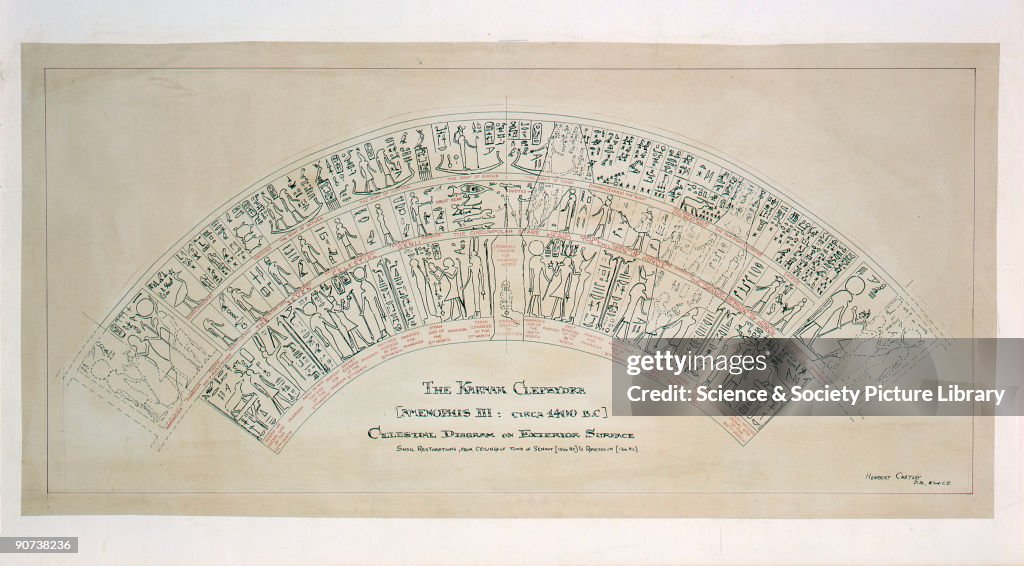�The Karnak Clepsydra, Egyptian celestial diagram, c 1400 BC.
EGYPT - DECEMBER 21: A copy (made in 1939) of the hieroglyphics and other figures embossed on the outside of an Egyptian water clock or 'clepsydra' which was discovered in the Temple of Karnak, Luxor, Upper Egypt, and dates from the rule of King Amenhophis III (1415- 1380 BC). The top row shows a series of planet gods and the 36 decan stars - the great celestial timekeepers of the ancient Egyptians. In the middle are various constellations and deities and, on the bottom row, a calendar of months and month gods. (Photo by SSPL/Getty Images)

PURCHASE A LICENSE
How can I use this image?
kr. 3.000,00
DKK
Please note: images depicting historical events may contain themes, or have descriptions, that do not reflect current understanding. They are provided in a historical context. Learn more.
DETAILS
Restrictions:
Contact your local office for all commercial or promotional uses.
Credit:
Editorial #:
90738236
Collection:
SSPL
Date created:
January 02, 1754
Upload date:
License type:
Release info:
Not released. More information
Source:
SSPL
Object name:
10314591
Max file size:
3499 x 1933 px (11.66 x 6.44 in) - 300 dpi - 3 MB